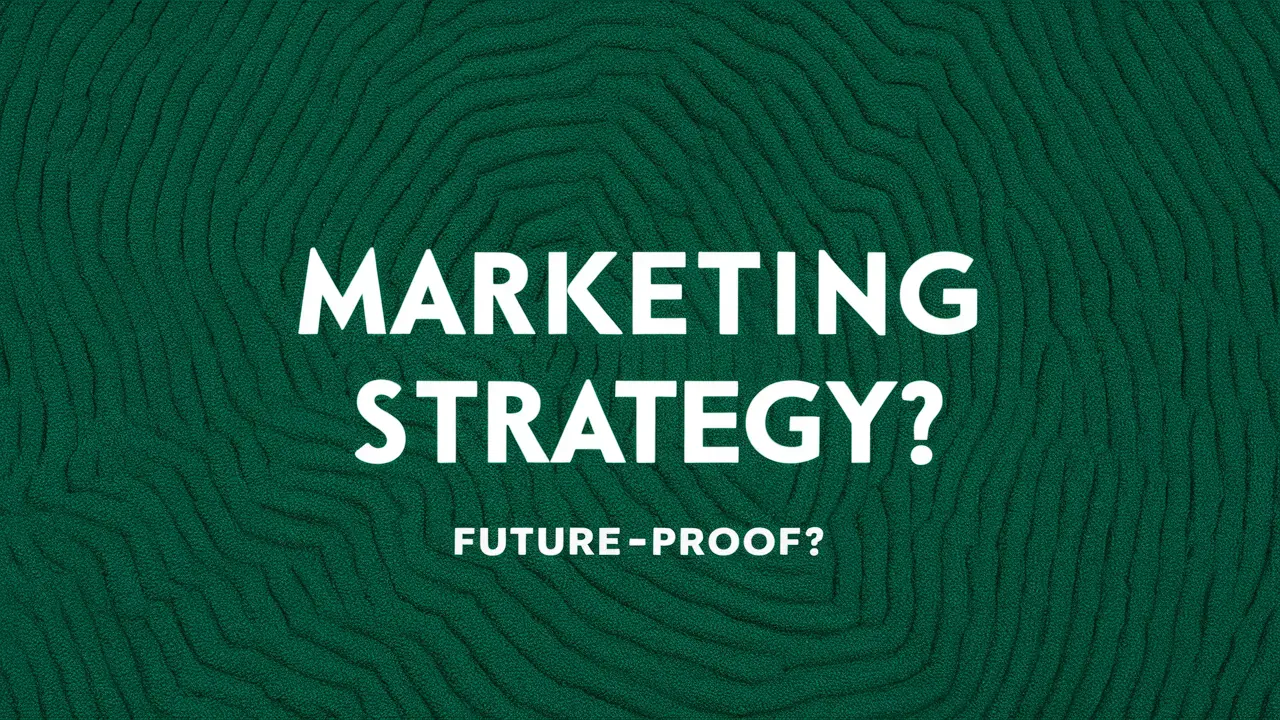Unlocking Success: The Crucial Role of a Written Marketing Plan
A written marketing plan is a strategic blueprint outlining a company’s marketing actions for the next 12-18 months. It serves as a roadmap, directing promotional operations, and is critical for any firm looking to thrive in today’s competitive environment. This long-term marketing strategy ensures sustained growth and adaptation to market changes.
Providing a Clear Direction
A well-documented marketing strategy requires a company to carefully consider all essential areas of how it will reach its target market and describe the procedures required to achieve its marketing goals. This clarity of purpose and direction guarantees that all marketing efforts are in line with the company’s overarching objectives, avoiding ad hoc initiatives that may not contribute to long-term success.
Setting Measurable Goals
The marketing plan includes clear and quantifiable targets, which are critical for tracking progress and making educated decisions. These objectives aid in analyzing the performance of marketing plans and methods over time, allowing adjustments to be made as necessary. Setting benchmarks allows a business to analyze its return on investment and understand the impact of its marketing initiatives. Businesses that plan ahead can optimize their budgets, staff time, and other resources, ensuring that every dollar spent contributes to the plan’s goals.
Ensuring Efficient Use of Resources
A detailed marketing plan is also important for ensuring that resources are allocated efficiently. It assists firms in reducing unnecessary spending by focusing on targeted marketing activities that are more likely to produce results. This efficient use of resources is a cornerstone of any long-term marketing strategy, allowing businesses to optimize their budgets, staff time, and other resources.
Essential Elements of an Effective Marketing Plan
Market Research
Market research is the foundation of any successful marketing strategy. It entails acquiring data on your industry, competitors, and customers to make informed decisions. This research might be either primary (surveys and focus groups) or secondary (industry reports and sales data). The purpose is to comprehend market dynamics, client needs, and the competitive landscape. This information can help you design a marketing strategy that resonates with your target demographic and outperforms competitors.
Target Audience Identification
Identifying your target demographic is critical to the effectiveness of any marketing campaigns. This step requires defining your ideal customer’s demographics, psychographics, and behavior. Understanding who they are, what they value, and how they make purchasing decisions allows you to target your marketing messages and strategies to the precise groups most likely to buy from you.
Marketing Objectives
Setting specific marketing objectives provides guidance for your marketing strategy as well as a means of measuring progress. Specific, measurable, attainable, relevant, and time-bound objectives (SMART) are preferred. They could include raising brand awareness, increasing revenue by a specific percentage, or expanding your market share. These objectives will act as benchmarks for evaluating the efficacy of your marketing strategies and making required changes.
Marketing Strategies for Each Channel
Creating marketing strategies for each channel ensures that your messaging is tailored to the platform and the audience that uses it. Whether it’s social media, email marketing, content marketing, or traditional advertising, each channel demands a distinct strategy. Strategies should be consistent with your overall marketing goals and intended to effectively engage your target audience. For example, social media could be used to increase brand exposure, whereas email marketing could be utilized to retain customers.
Budget Allocation
A well-planned budget is critical to ensure that your marketing strategy is financially viable. Allocate your budget depending on the techniques that will provide the highest return on investment (ROI). This could include spending more on high-performing channels or investing in new techniques with the potential for a big impact. Be cost-conscious and always include a contingency reserve for unanticipated chances or obstacles.
Timeline for Execution
A schedule for implementation helps keep your marketing strategy on track. It should specify when each marketing action will take place and who will be in charge of ensuring its execution. This schedule must be adaptable enough to accept changes in the market or business while remaining organized enough to ensure that marketing objectives are reached within a particular time frame. Regular timeline assessments might assist in modifying the pace or sequence of marketing activities as needed.

Mastering Multi-Channel Marketing: Execution and Measurement
Social Media Marketing
To properly implement your social media marketing strategy, first determine which platforms your target demographic is most active on. Create a content calendar to ensure a regular posting schedule. Respond to comments and messages from your audience to increase engagement. Use platform-specific features such as Instagram Stories or Twitter polls to boost engagement. Invest in social media ads to reach a larger audience. Track your performance with the platform’s analytics tools to better understand your audience’s behavior and adjust your strategy accordingly.
Email Marketing
Create a large email list by providing meaningful incentives for sign-ups, such as special material or discounts. Segment your list to provide personalized and relevant content to different audiences. Create appealing subject lines to increase open rates and build mobile-friendly emails to accommodate users on the go. Test several email formats and times to discover which ones generate the most engagement. Use email marketing solutions to automate campaigns and evaluate metrics such as open rates, click-through rates, and conversions to determine effectiveness.
Content Marketing
Create a content plan that is consistent with your brand’s voice and audience interests. Create high-quality, useful content that solves your clients’ pain areas and inquiries. To accommodate varying preferences, use a variety of media such as blog articles, videos, infographics, and podcasts. Optimize your content for search engines with relevant keywords to increase visibility. Encourage people to share your content by promoting it across your marketing platforms. Track interaction analytics, website traffic, and lead generation to determine how successful your content is.
SEO (Search Engine Optimization)
Conduct keyword research to identify the terms your target audience uses when searching for your products or services. Ensure your website’s structure and content are optimized for these keywords, including meta tags, headlines, and images. Enhance user experience and search rankings by making your website mobile-friendly and fast-loading. Boost your site’s authority by obtaining high-quality backlinks from reputable websites. Regularly update your content to keep it fresh and relevant. Monitor your SEO performance by tracking rankings, organic traffic, and conversion rates.
Traditional Marketing Methods
Complement your digital efforts with traditional marketing strategies such as print ads, direct mail, or networking events. Tailor your message to the medium and audience while remaining consistent with your overall brand message. Use trackable phone numbers, special URLs, or promo codes to evaluate the effectiveness of traditional marketing. Adjust your techniques based on the response rates and ROI obtained from these methods.
Tracking and Measuring Effectiveness
Regardless of channel, it is critical to track and measure the efficacy of your marketing strategies. Set specific goals and KPIs for each channel to assess success. Data collection options include Google Analytics, social media analytics, and email marketing software. Conduct A/B testing to see which tactics are most effective. Regularly evaluate your data to determine what is and is not working, and be prepared to change your plan if required.
Takeaways and Action Items
A robust sales strategy hinges on a structured approach and continuous refinement through real-world application and feedback. A well-defined sales procedure ensures consistent, effective customer engagements, improving efficiency and productivity. Key elements include meticulous documentation, regular team training, and technology adoption to automate and monitor sales activities.
Listening to customer and team feedback is crucial for identifying improvement areas and fostering continuous growth. Accurate quotes, clear service agreements, and effective negotiation enhance customer relationships, streamline operations, and boost sales revenue. Committing to these steps and ongoing improvement ensures your sales procedure evolves into a powerful growth engine.
| ✳️ Define Research Objectives and Methodology ✳️Collect and Analyze Data ✳️Report Findings and Apply Insights | |
| ✳️Compile and Analyze Existing Customer Data ✳️Conduct Primary Research to Gather Additional Insights. ✳️ Create Detailed Customer Personas. | |
| ✳️Set Clear Marketing Objectives and Choose Appropriate Channels. ✳️Develop Channel-Specific Strategies and Content Plan. ✳️Implement, Track, and Adjust. | |
| ✳️Assess Current Response Times and Identify Inefficiencies. ✳️Implement Process Improvements and Leverage Technology. ✳️Monitor, Measure, and Continuously Optimize. | |
| ✳️Audit Current Lead Generation Channels ✳️Optimize and Expand High-Performing Channels ✳️Implement Targeted Campaigns and Lead Nurturing |
FAQ
Get your FREE 8 Gears Assessment Score in 10 minutes!


